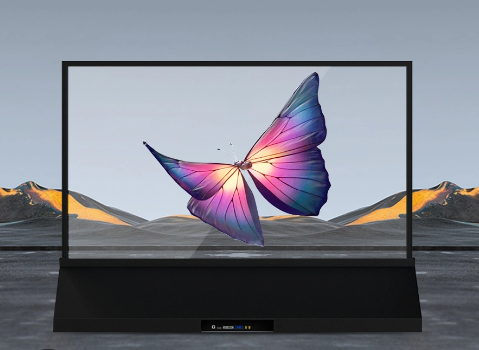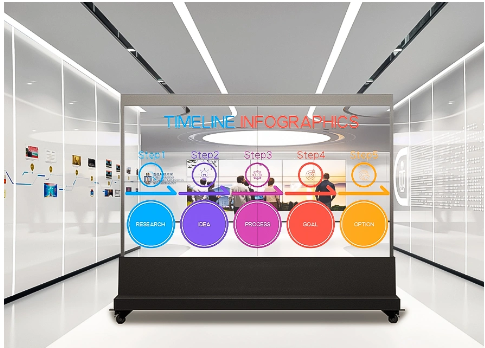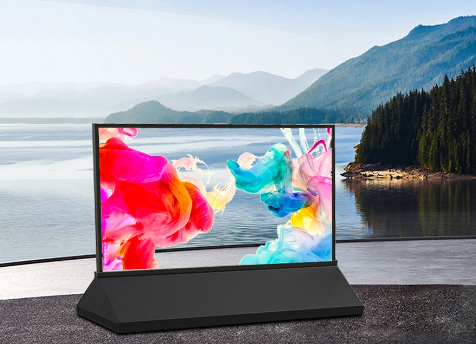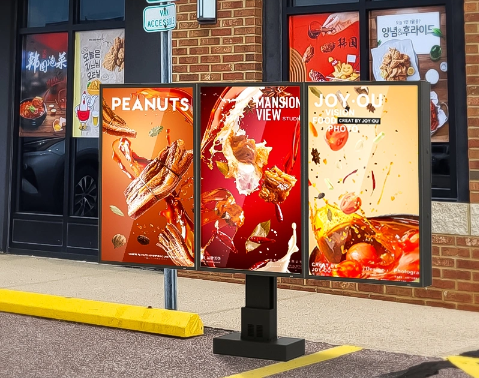In today's fast-paced world, the need for quick and effective communication has become more important than ever before. The digital age has brought about a revolution in the way we communicate, with the use of digital signage becoming increasingly popular. One of the most popular types of digital signage is the LCD digital signage.
LCD digital signage is a type of electronic display that uses liquid crystal technology to display content. It is commonly used for advertising, information dissemination, and brand promotion. LCD digital signage displays can range from small handheld devices to large display screens in public spaces such as airports, train stations, shopping malls, and other public areas.
Why use LCD digital signage?
LCD digital signage offers several benefits over traditional signage methods such as posters and billboards. These benefits include:
Dynamic Content: With
LCD digital signage, you can easily update and change the content displayed on the screen. This means that you can create more dynamic and engaging content that captures the attention of your target audience.
Cost-effective: Compared to traditional signage methods, LCD digital signage is more cost-effective in the long run. You don't have to keep reprinting posters or billboards, and you can update the content on the screen without having to pay for new signage.
Eco-friendly: LCD digital signage is more environmentally friendly than traditional signage methods. Since you don't have to keep reprinting posters or billboards, there is less paper waste. Additionally, LCD digital signage uses less energy than traditional signage methods, which makes it a more sustainable option.
Analytics: With LCD digital signage, you can track the effectiveness of your advertising campaigns. You can monitor how many people are viewing your content, how long they are viewing it, and what actions they take after viewing your content.
LCD digital signage sizes
LCD digital signage is a popular tool used for advertising, information display and other purposes in a variety of environments including retail stores, airports, hotels and public transportation stops. Digital signage screens come in a variety of sizes, and choosing the right size depends on intended use, available space, and budget. Here are some commonly used LCD digital signage sizes.
Small digital signage:
Small digital signage screens typically range in size from 15 to 27 inches. They are suitable for spaces with limited space and for displaying basic information such as prices, menus and schedules. They are also frequently used in healthcare facilities to display patient information, and in public transportation to display arrival and departure times.
Medium-sized digital signage:
Medium-sized digital signage screens range in size from 32 to 55 inches. They are the most commonly used size for digital signage and are suitable for a variety of environments including retail stores, hotels and restaurants. They are great for displaying promotional content, advertisements, and other types of information. Medium-sized digital signage screens can be freestanding or mounted on walls or ceilings.
Large digital signage:
Large digital signage screens range in size from 60 inches to 90 inches. It is suitable for large spaces such as stadiums, airports, and shopping malls. They are ideal for displaying high-quality, high-resolution content such as video, animation, and graphics. Large digital signage screens are often used for advertising, wayfinding and branding purposes.
LCD Video wall:A video wall consists of multiple screens of any size arranged in a grid or mosaic pattern to create a larger display. They are used to create visually stunning displays in large spaces such as shopping malls, conference rooms and museums. Video walls can consist of screens of different sizes and are ideal for displaying immersive content such as video presentations and interactive exhibits.
Choosing the appropriate LCD digital signage size depends on the application, available space and budget. Small digital signage screens are suitable for displaying basic information, while medium and large screens are suitable for advertising and branding. Video walls are used to create immersive displays in large spaces. By understanding the size differences, you can choose the digital signage size that best suits your needs.
LCD digital signage Applications
LCD digital signage can be used in a variety of settings and applications, including:
Advertising: LCD digital signage is commonly used for advertising in public spaces such as shopping malls, airports, train stations, and other high-traffic areas.
Information dissemination: LCD digital signage can be used to provide information such as weather updates, news, and event schedules.
Brand promotion: LCD digital signage can be used to promote brands and products in retail stores, showrooms, and other public spaces.
Wayfinding: LCD digital signage can be used to guide people through complex spaces such as airports, hospitals, and university campuses.
How to Choose LCD Digital Signage
When it comes to selecting an LCD digital signage, there are several factors that one must consider to ensure the best possible outcome. Here are some key points to keep in mind:
Purpose: Determine the purpose of the signage. Is it for advertising or information purposes? What type of content will be displayed? Understanding the purpose of the signage will help you choose the appropriate size, resolution, and features.
Size: Consider the viewing distance and location of the signage. A larger screen may be required for a larger space or a greater viewing distance. However, if the signage will be viewed up close, a smaller screen may suffice.
Resolution: The resolution of the screen is an important factor to consider. A higher resolution will result in better picture quality and sharper text. However, a higher resolution also means a higher cost. Determine the optimal resolution based on the purpose of the signage and budget.
Connectivity: The ability to connect to different devices and platforms is important for versatility and convenience. Consider the types of devices and platforms that will be used to manage and display content on the signage, and ensure that the signage has the appropriate connectivity options.
Durability: The durability of the signage is important, especially if it will be placed in a high-traffic area or exposed to harsh weather conditions. Consider the level of protection offered by the signage against scratches, dust, and water.
Energy efficiency: Look for energy-efficient options to save on power consumption and operating costs. Consider the energy efficiency ratings and features such as automatic brightness adjustment and sleep mode.
Brand reputation and support: Finally, choose a reputable brand with good customer support. This will ensure that any technical issues or problems are addressed quickly and efficiently.
In summary, selecting an
LCD digital signage requires careful consideration of the purpose, size, resolution, connectivity, durability, energy efficiency, and brand reputation and support. With careful planning and execution, digital signage can effectively capture the attention of target audiences and enhance the overall customer and guest experience.







